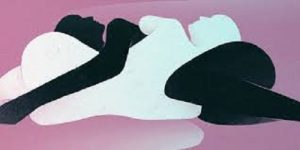
In a review distributed in Hormones and Behavior, scientists investigated the association in a gathering of undergrad ladies. They estimated chemical levels more than two full monthly cycles, and contrasted the outcomes with day to day diaries where the members recorded s3xual movement and sensations of playfulness.
The analysts found that changing degrees of estrogen and progesterone had serious s3x drive after effects. Reasonable in light of the fact that, “estrogen advances drive and want,” makes sense of Gupta. “Progesterone is a balancing out chemical that smothers drive.”
Before that time, that large number of chemicals arrive at an elevated state. Yet, just before your period, they crash, says Nan Wise, Ph.D., a mental neuroscientist and confirmed s3x specialist. “During week one of your period, while you’re dying, estrogen begins a consistent trip,” she says.

This second during your cycle can be especially ready for must have-it-now want. “During and just after the period is when progesterone”- the chemical that smothers your sex drive-“is the most reduced,” makes sense of Gupta. In the interim, your craving helping estrogen levels are developing, presenting a defense for expanded horniness.
All things considered, in view of chemicals alone, your period likely isn’t the pinnacle of your s3xual craving. Research shows that your fluctuating chemical levels prime you to be the horniest around ovulation part of the way through your cycle or fourteen days after your period.
That implies there could be different variables playing into your friskier-than-typical sentiments during your period, says Wise.






